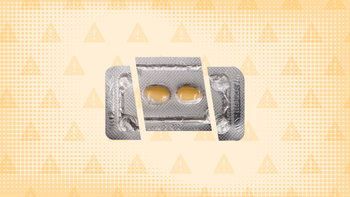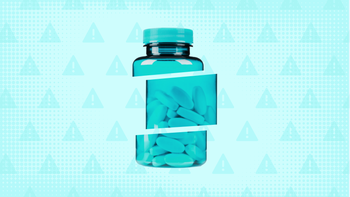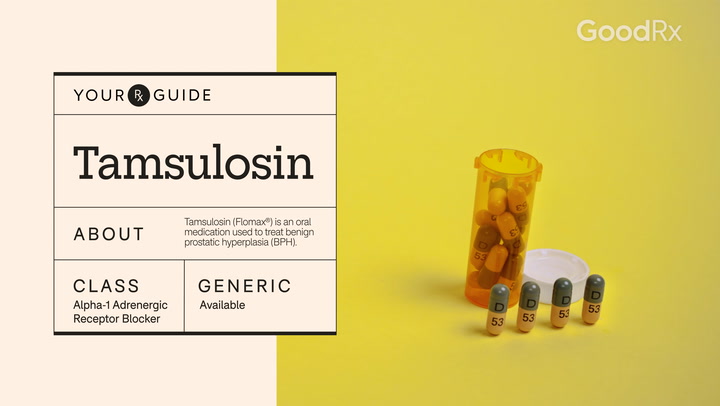
Dutasteride vs. Finasteride for Benign Prostatic Hyperplasia: Which Is Better?
Key takeaways:
Dutasteride (Avodart) and finasteride (Proscar) are medications used to treat benign prostatic hyperplasia (BPH). They work to decrease the size of your prostate.
Both medications are expected to have similar side effects and effectiveness. But dutasteride may be more likely to interact with other medications.
Dutasteride and finasteride are available as lower-cost generics. You can find them both for less than $10 at certain pharmacies with a free GoodRx discount.
Access savings on related medications
Table of contents

If you have benign prostatic hyperplasia (BPH), you may be familiar with the annoying urinary symptoms — like getting up to pee at night — that can go along with it. Over time, this can start interfering with daily life. If this sounds like your situation, you may be considering your options for relief.
Some BPH medications only treat the urinary symptoms. But others can also help target their underlying cause — an enlarged prostate. By shrinking your prostate, these medications can help improve urine flow. They take longer to work, but they can also decrease the need for surgery over time. Two common options include dutasteride (Avodart) and finasteride (Proscar).
Both dutasteride and finasteride belong to the same medication class. But does one work better for BPH than the other? Let’s discuss.
What is dutasteride?
Dutasteride is an oral medication that’s FDA approved to treat BPH in men with an enlarged prostate. It’s used to help improve symptoms and lower the risk of urine retention. And it can also lower the likelihood you’ll need BPH-related surgery.
Dutasteride is also approved for use in combination with tamsulosin (Flomax) for BPH. Tamsulosin doesn’t affect prostate size, but it can help with urinary symptoms. Both medications are available separately as well as in a combination product called Jaylin.
What is finasteride?
Finasteride is another medication approved to treat BPH. And it has all the same uses as dutasteride. But it’s approved for use in combination with doxazosin (Cardura) instead of tamsulosin. Doxazosin also helps with urinary symptoms.
The name finasteride might sound familiar to you. That’s because it’s also available under the brand name Propecia for hair loss. While both medications contain finasteride, they’re not interchangeable.
How do dutasteride and finasteride work for BPH?
Both dutasteride and finasteride are 5-alpha reductase inhibitors. This class of medications works by blocking the conversion of testosterone to dihydrotestosterone (DHT). DHT is a sex hormone that promotes prostate growth.
Less DHT in your prostate can help reduce prostate size. This can help alleviate urinary symptoms, since your prostate may not be blocking urine flow as much.
Keep in mind: It takes time for your prostate to get smaller. So, you’ll need to take these medications for a while before you notice symptom improvement. This typically ranges from 3 to 6 months.
How are dutasteride and finasteride dosed and given?
Dutasteride is available as 0.5 mg capsules. It’s taken by mouth once daily. You can take it with or without food. But don’t chew, crush, or open the capsules.
Finasteride for BPH is available as 5 mg tablets. It’s also taken by mouth once daily. And you can take it with or without food.
How effective are dutasteride and finasteride for treating BPH?
When treating BPH, dutasteride and finasteride are typically reserved for certain people, like those with larger prostates. But does one option work better than the other?
A head-to-head clinical trial compared dutasteride and finasteride to see how well they work for BPH. Both medications effectively reduced prostate size, with similar findings after 3 months and again after 1 year. They also both improved BPH symptoms and urine flow. Side effects were similar between the two medications.
Researchers determined that dutasteride and finasteride worked similarly well for BPH. But your healthcare provider may have a preference for you based on your medical history, other medications you’re taking, and other factors.
What are the known side effects of dutasteride and finasteride?
Dutasteride and finasteride can cause similar side effects. Of those reported during clinical trials, erectile dysfunction and decreased sex drive were most common. Ejaculation problems and breast tissue growth (gynecomastia) were also reported.
Certain side effects may improve or go away over time. Tell your healthcare provider if any start interfering with your daily life. They can discuss potential options with you.
Although rare, some people have reported side effects that continue after stopping finasteride. This is referred to as, “post-finasteride syndrome,” or “PFS” for short. PFS may also be possible with dutasteride. But experts don’t know for sure if these effects are caused by the medication itself.
In addition to side effects listed above, PFS can include other sexual, physical, and mental effects. Let your healthcare provider know if any side effects continue after stopping these medications.
What are the serious side effects of dutasteride and finasteride?
Dutasteride and finasteride can also cause more serious side effects. These include:
Allergic reactions. Like many medications, there’s a risk for severe allergic reactions, including anaphylaxis. Seek immediate medical attention if you have difficulty breathing, hives, or swelling of your face, tongue, or throat.
Increased risk of prostate cancer. All 5-alpha reductase inhibitors may increase the risk of a serious form of prostate cancer. While the overall risk is small, it’s still possible. Be sure to discuss your personal risk and family history of prostate cancer with your healthcare provider.
Harm to an unborn baby. Women who are pregnant or planning to become pregnant shouldn’t handle these medications. Exposure to dutasteride or finasteride could potentially affect the development of a male unborn baby.
What interactions do dutasteride and finasteride have?
Dutasteride is broken down by certain liver proteins. And some medications can block these proteins from breaking it down. This may lead to higher dutasteride levels in your body. Examples of these include ritonavir (Norvir; part of Paxlovid), clarithromycin (Biaxin), and itraconazole (Sporanox).
Finasteride hasn’t been found to have any clinically significant drug interactions. So, it may be preferred, based on other medications you’re taking.
It’s important to have your healthcare provider and pharmacist review your current medication list. They can advise if either medication is safe to take.
How to save on finasteride and dutasteride
Finasteride and dutasteride both have lower-cost generic versions available. GoodRx can help you save on your prescription. In fact, you can save over 85% off the average retail price of either medication.
With a free GoodRx discount, generic finasteride’s price is less than $6 at certain pharmacies for a 30-day supply. And generic dutasteride’s price is less than $10 for a 30-day supply.
The bottom line
Dutasteride and finasteride both treat BPH by reducing the size of your prostate. This can help with urinary symptoms, but it can take a few months to notice improvement.
Both medications are thought to work similarly well for BPH and can cause similar side effects. But dutasteride may be more likely to interact with other medications you’re taking. Your healthcare provider can determine which option is best for you.
Why trust our experts?



References
Bryant Ranch Prepack. (2021). Dutasteride [package insert].
Bryant Ranch Prepack. (2021). Finasteride [package insert].
Kinter, K. J., et al. (2022). Biochemistry, dihydrotestosterone. StatPearls.
Lerner, L. B., et al. (2021). Benign prostatic hyperplasia (BPH) guideline. American Urological Association.
Nickel, J. C., et al. (2011). Comparison of dutasteride and finasteride for treating benign prostatic hyperplasia: The Enlarged Prostate International Comparator Study (EPICS). BJU International.
Ribeiro Pereira, A. F. J., et al. (2020). Post-finasteride syndrome. Anais Brasileiros de Dermatologia.
Salisbury, B. H., et al. (2022). 5 alpha reductase inhibitors. StatPearls.





















